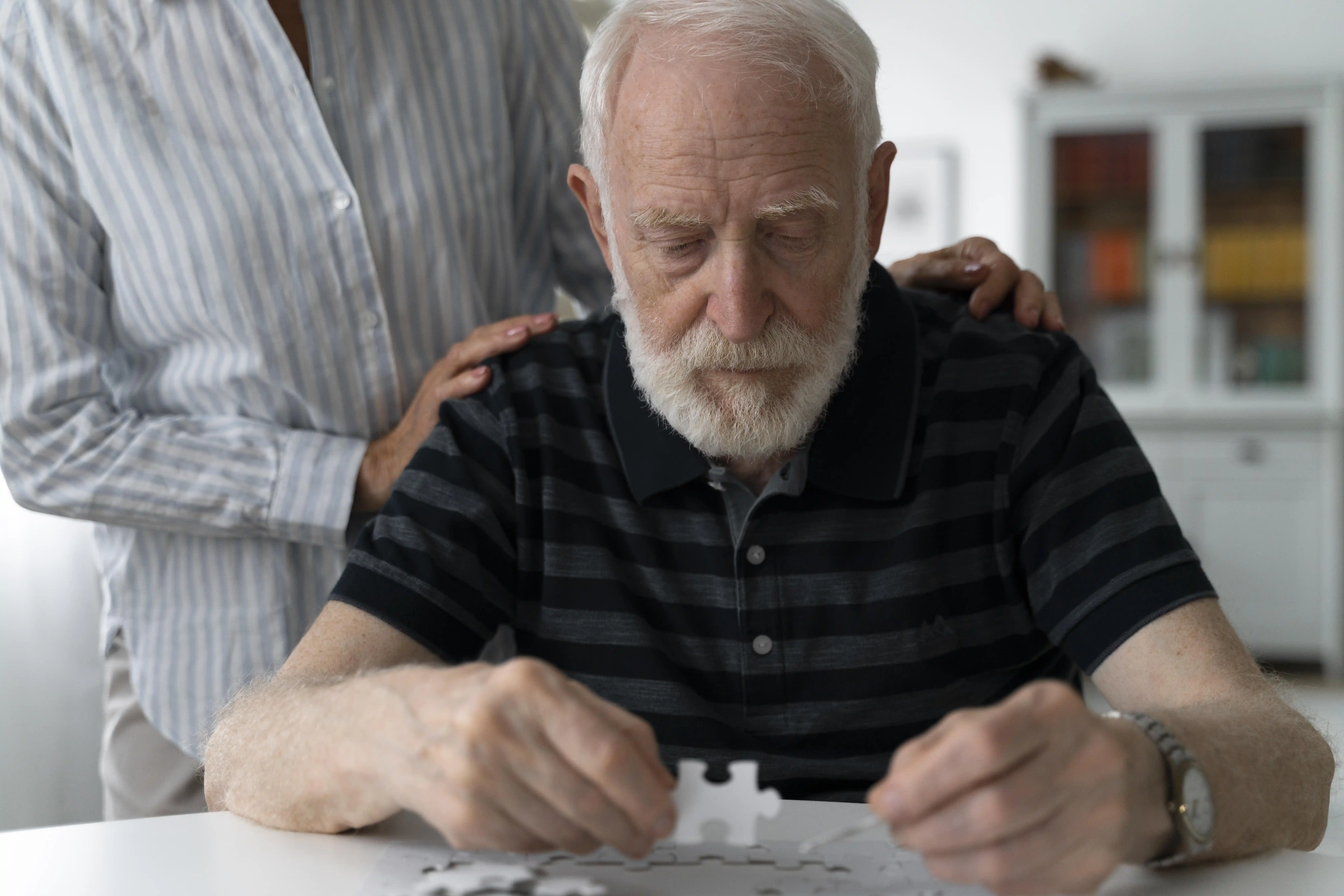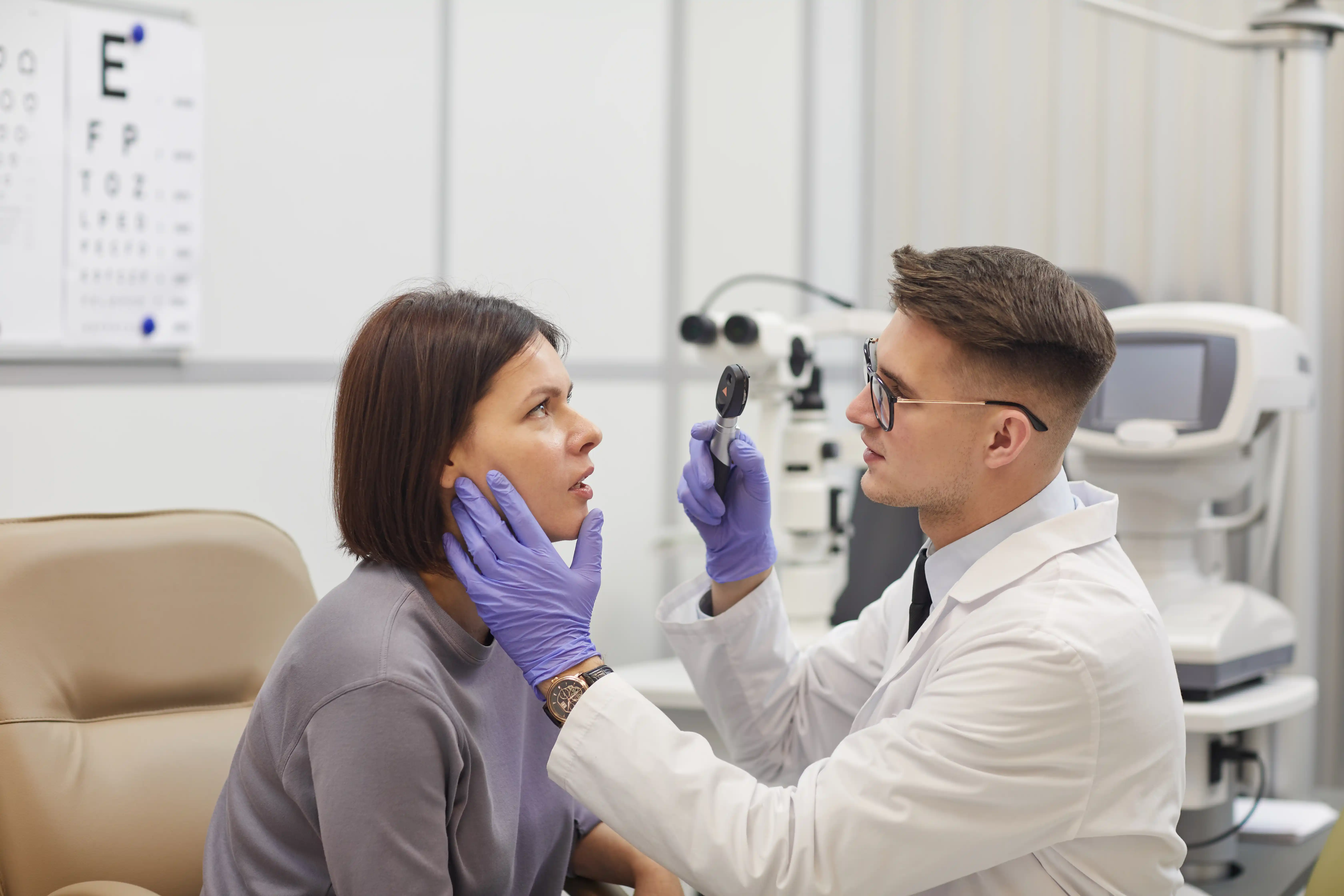The Multi-System Approach: Understanding POTS, Dysautonomia, and Recovery Pathways
Dr. Joseph Schneider brings over 35 years of experience as a functional neurologist to his work with patients suffering from complex neurological conditions. Through his practice at the Hope Brain and Body Recovery Center, he has helped thousands of patients rebuild their nervous systems and reclaim their lives. Alongside Joseph Quirk, an exercise specialist who works closely with patients in rehabilitation settings, Dr. Schneider explores the intricate relationship between Postural Orthostatic Tachycardia Syndrome (POTS) and dysautonomia on My POTS Podcast.

About This Blog
Dr. Joseph Schneider brings over 35 years of experience as a
functional neurologist to his work with patients suffering from complex
neurological conditions. Through his practice at the Hope Brain and Body
Recovery Center, he has helped thousands of patients rebuild their nervous
systems and reclaim their lives. Alongside Joseph Quirk, an exercise specialist
who works closely with patients in rehabilitation settings, Dr. Schneider
explores the intricate relationship between Postural Orthostatic Tachycardia Syndrome (POTS) and dysautonomia on My POTS
Podcast. Their
combined expertise offers a unique perspective on how these conditions affect
multiple body systems—from cardiovascular and neurological to digestive and
metabolic—and how targeted interventions can help patients recover. In this
episode, they discuss the connections between autonomic dysfunction, exercise
tolerance, cognitive impairment, environmental factors like mold exposure,
hormonal imbalances, and gut health, providing comprehensive insights for those
trapped in what Dr. Schneider describes as "living hell" due to these
debilitating conditions.
Understanding the
Relationship Between POTS and Dysautonomia
POTS and dysautonomia are fundamentally connected, with POTS
representing the cardiovascular and respiratory manifestations of broader
autonomic nervous system dysfunction. As Dr. Schneider explains, POTS falls
under the dysautonomia umbrella, focusing specifically on how autonomic
dysfunction affects heart rate, blood pressure, and oxygen utilization. While
medical professionals often search for classical patterns in these conditions,
Dr. Schneider emphasizes that each case presents uniquely, making personalized
assessment and treatment essential for effective care.
This unpredictability makes treating POTS and dysautonomia
particularly challenging, as practitioners must continuously test, treat, and
retest to determine if interventions are moving patients in the right
direction. Exercise with oxygen therapy provides valuable real-time data about
how a patient's autonomic system responds to physical exertion, revealing
patterns in heart rate, oxygen saturation, and recovery time that guide
treatment decisions. These measurements help clinicians identify when patients
reach their metabolic threshold and develop strategies to expand their capacity
for activity gradually.
The relationship between these conditions extends beyond
cardiovascular symptoms to affect multiple body systems. Many patients
experience digestive issues as their dysautonomia disrupts gastrointestinal
function, ranging from nausea and vomiting to gastroparesis and metabolic
disturbances that cause either rapid weight gain or inability to maintain
weight. Cognitive function often suffers as the autonomic disruption impacts
brain performance. Environmental factors like mold exposure, heavy metal toxicity,
and disrupted cortisol patterns further complicate the clinical picture. This
multi-system involvement explains why treatment approaches must address the
whole person rather than focusing exclusively on heart rate and blood pressure
abnormalities.
Exercise
Rehabilitation in POTS and Dysautonomia
Exercise presents both challenges and opportunities for POTS and
dysautonomia patients. Many experience severe fatigue during physical activity,
often hitting their limit much earlier than expected. Dr. Schneider notes that
proper exercise rehabilitation can gradually increase both aerobic and
anaerobic capacity, allowing patients to become more functional over time.
However, this requires careful monitoring and progression to prevent setbacks
from overexertion.
Common mistakes in exercise approaches include dehydration,
excessive intensity, poor technique, and inappropriate pacing. Joseph Quirk
highlights that many people push themselves too hard too quickly, training to
exhaustion rather than appropriate fatigue. This distinction is crucial for
POTS patients, as overtraining can actually trigger or worsen dysautonomia
symptoms. The podcast discusses how even healthy individuals attempting
challenges like marathon training or intensive fitness programs like "75
Hard" frequently drop out, with estimates suggesting over 50% abandonment
rates.
The exercise with oxygen therapy used at Hope Brain and Body
Recovery Center provides valuable insights into autonomic function. When
patients exercise while being monitored, clinicians can observe unusual
patterns like heart rate dropping when it should increase—a sign that
metabolism has hit its threshold. This concerning response requires immediate
intervention, with practitioners having patients stop activity and switch to
higher oxygen concentrations until recovery occurs. These observations inform
individualized exercise prescriptions that gradually build capacity without
triggering autonomic crashes.
The Impact of
Dysautonomia on Brain Performance
Brain fog represents one of the most debilitating aspects of POTS
and dysautonomia, significantly impacting cognitive function and quality of
life. Dr. Schneider shares his personal experience with post-concussive brain
fog, describing how intense mental effort to overcome cognitive difficulties
would actually trigger migraines. This counterintuitive relationship between
mental exertion and symptom worsening helps explain why many patients
experience increased symptoms when attempting to concentrate or complete
cognitive tasks.
The cognitive difficulties extend beyond general mental fatigue to
specific functional impairments. Patients often experience aphasia
(word-finding problems), memory issues, and slowed reaction times. Dr.
Schneider illustrates this with a personal anecdote about forgetting a friend's
name after experiencing mild brain trauma, spending an entire football game
calling the person "dude" or "buddy" while struggling
internally to recall the name. These cognitive symptoms can create significant
social and professional challenges, as patients may appear less competent or
engaged than they truly are.
When measuring reaction times in patients with brain injuries,
clinicians sometimes discover alarming delays—up to a full second between
visual input and physical response. Such delays can have serious consequences,
potentially causing accidents while driving or operating machinery. These
findings underscore the importance of addressing cognitive function as part of
comprehensive POTS and dysautonomia treatment. As Dr. Schneider emphasizes,
performance issues extend beyond physical symptoms to impact emotional
regulation, multitasking abilities, and overall brain performance, creating a
cascade of difficulties that affect daily functioning.
Environmental
Factors and Systemic Influences
Beyond exercise and nutrition, environmental factors play a
significant role in triggering or perpetuating POTS and dysautonomia. Dr.
Schneider discusses the importance of testing for mycotoxins—toxic compounds
produced by mold—which can cause neuroinflammation and neurodegeneration when
exposure is prolonged. Patients who have had mold in their systems for extended
periods may develop cognitive decline resembling early dementia. Similarly,
heavy metal toxicity, particularly lead, can contribute to persistent brain fog
and impair neurological rehabilitation efforts.
Hormonal rhythms, particularly cortisol patterns, significantly
impact symptom presentation throughout the day. Many POTS patients struggle
most in the morning when changing positions, experiencing heart rate
fluctuations and blood pressure drops, while feeling better later in the day.
This disrupted circadian rhythm often leads to sleep avoidance as patients
dread waking up to renewed symptoms. Testing cortisol patterns throughout the
day helps identify these disruptions and guides treatment approaches.
Blood sugar regulation represents another crucial metabolic factor
affecting POTS patients. The podcast discusses how insulin resistance and blood
sugar fluctuations contribute to energy crashes, particularly after meals. Some
patients experience rapid weight gain despite minimal dietary changes, while
others struggle to maintain weight due to digestive dysfunction, nausea, and
vomiting. Understanding these metabolic patterns helps clinicians develop
personalized nutritional strategies focusing on meal timing, portion size, and
macronutrient balance to stabilize these systems.
Fuel, Inflammation,
and Recovery: The Nutritional Connection
Proper fueling plays a critical role in POTS and dysautonomia
recovery, with food sensitivities often driving systemic inflammation that
exacerbates symptoms. The podcast emphasizes three essential systems that must
work together for proper functioning: neurological input, muscular response,
and delivery of fuel. When patients continue to consume foods that trigger
inflammatory responses, their progress remains limited despite appropriate
treatment in other areas.
Food sensitivity testing helps identify specific triggers, with
many patients reacting to common foods like dairy and gluten. Dr. Schneider
explains that when patients fail to eliminate reactive foods, their symptoms
persist or improve only minimally. The inflammation caused by these food
sensitivities can affect multiple systems, including the blood-brain barrier
and gut function, creating a cycle of immune activation that perpetuates
autonomic dysfunction.
The hosts observe that dietary effects appear most visibly in
children with behavioral issues, who often demonstrate immediate mood and
behavior changes after consuming trigger foods. In POTS patients, the effects
may be more subtle but equally important for recovery. Dr. Schneider also
discusses how digestive dysfunction can manifest as leaky gut, where
inflammation allows partially digested food to enter the bloodstream, or as
dysbiosis, where harmful bacteria produce inflammatory compounds that affect the
entire system. Without addressing these digestive and nutritional factors,
other interventions may show limited effectiveness as the system lacks the
resources needed for repair and optimal function.
Taking Control of
Your Recovery
Understanding the complex interplay between POTS, dysautonomia,
exercise tolerance, and brain function empowers patients to take a more active
role in their recovery. By recognizing how these systems interact, individuals
can make informed decisions about their health and work more effectively with
healthcare providers to develop comprehensive treatment approaches.
If you're struggling with symptoms of POTS or dysautonomia,
consider taking these practical steps toward improvement:
●
Track your
symptoms systematically, noting patterns related to activity, nutrition, time
of day, and rest
●
Work with
healthcare providers familiar with autonomic dysfunction to establish
appropriate exercise parameters
●
Consider
comprehensive testing including food sensitivities, mold exposure, heavy
metals, and cortisol patterns
●
Investigate
your living and working environments for potential mold or other environmental
triggers
●
Monitor
blood sugar patterns and how they correlate with your symptoms throughout the
day
●
Practice
proper hydration before, during, and after any physical activity
●
Learn to
recognize early signs of reaching your metabolic threshold during exercise
●
Implement
strategies to support cognitive function, including pacing mental activities
●
Ensure
adequate rest between physical and mental exertion to promote recovery
●
Evaluate
your digestive function and consider testing for gut dysbiosis or leaky gut if
symptoms persist
Remember that recovery from these complex conditions typically
occurs gradually, with small improvements accumulating over time. The goal
isn't to push through symptoms but to systematically expand your capacity while
respecting your body's current limitations.
Dr. Schneider and Joseph Quirk emphasize that with proper
assessment, targeted interventions, and patience, many patients can
significantly improve their symptoms and reclaim activities they once enjoyed.
As they describe in the podcast, they work with patients who have often
"lost their life" to these conditions—unable to get out of bed,
attend school, work, or participate in normal activities. By addressing the
fundamental imbalances in autonomic function, identifying environmental
triggers like mold or heavy metals, correcting metabolic and hormonal rhythms,
reducing inflammatory factors, and gradually building physical and cognitive
resilience, you can work toward a more stable, functional state even after
years of living in what Dr. Schneider describes as "really living
hell."
For more information about approaches to POTS and dysautonomia
recovery, visit the Hope Brain and Body Recovery Center website or follow their
social media channels for ongoing insights and strategies. The center is
located in Chaddsford, Pennsylvania, and works with both local patients and
those who travel from afar for intensive treatment programs. Take the first
step today by evaluating how your current lifestyle, environment, and
biological factors may be impacting your symptoms, and consider scheduling a
comprehensive assessment with a practitioner experienced in autonomic
dysfunction to develop a personalized recovery plan. As Dr. Schneider
emphasizes, each case is unique—"it's not a paint by numbers"—but
with the right approach, recovery is possible.
Connect
with Dr. Joseph Schneider:
Website: Hope Brain and
Body Recovery Center
LinkedIn: Joseph Schneider
YouTube: @hopebrainbodyrecoverycenter
Instagram: @hopebraincenter_
Facebook: Hope Brain and Body Recovery Center
Related Blog
Duis mi velit, auctor vitae leo a, luctus congue dolor. Nullam at velit quis tortor malesuada ultrices vitae vitae lacus. Curabitur tortor purus, tempor in dignissim eget, convallis in lorem.





Comments